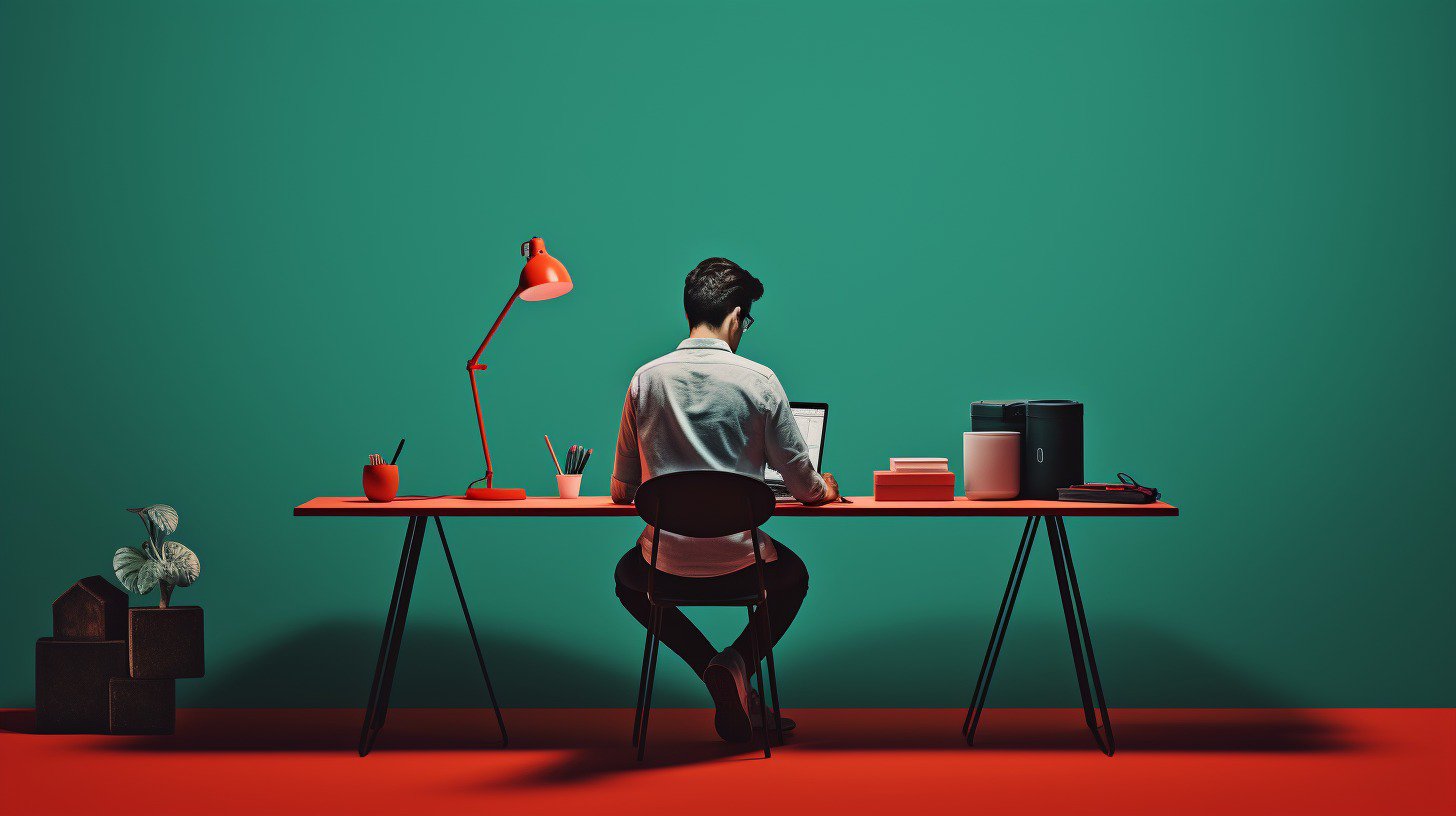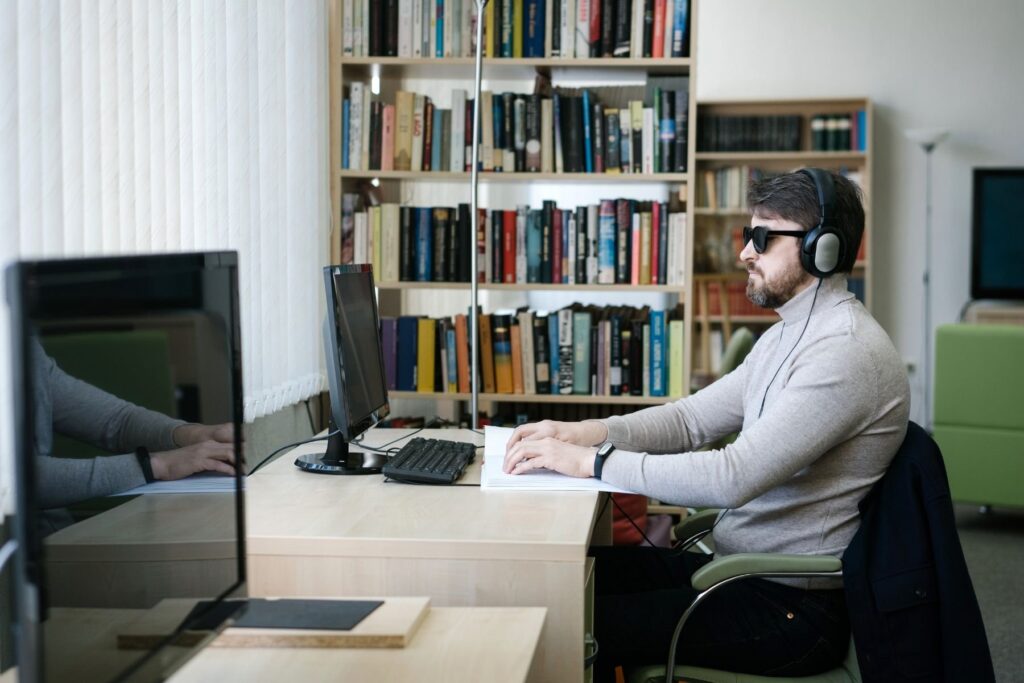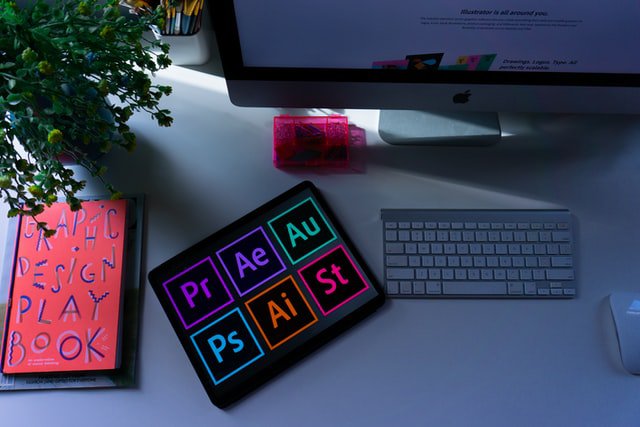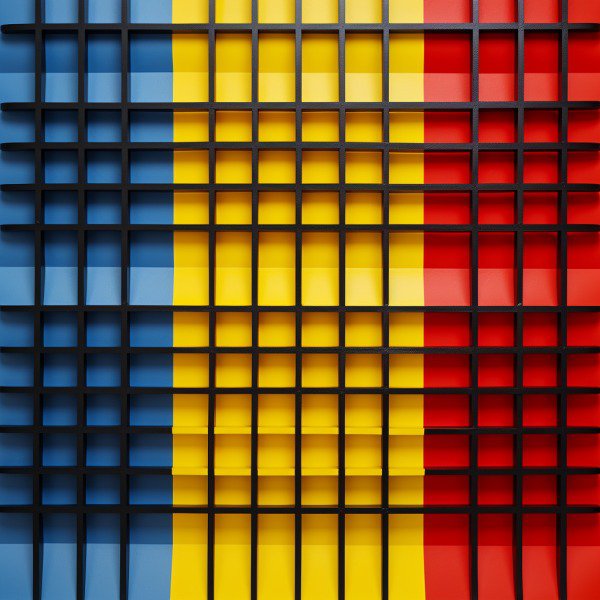Imagine yourself in a bustling startup, amidst coders, marketers, and strategists. In the middle of it all stands a product designer, sketching wireframes and mapping user journeys. Intrigued?
This is no ordinary role; it’s the lifeblood of innovative companies everywhere. A product designer doesn’t just shape interfaces or draft aesthetics – they craft experiences that make us click ‘Buy Now’ without a second thought.
Intricate as an architect’s blueprint yet dynamic like watercolors on canvas – that’s what you’ll find in the world of product design.
Are you eager to explore this captivating journey? Stay tuned for insights about UX design impact, skills required for success, and how these creative magicians can steer startups towards their business goals.
Table of Contents:
- The Role of a Product Designer in Impactful Startups Understanding the Product Design Process
Collaborative Efforts in Startup Teams - The Importance of UX Design in Product Development Iterative Design and User Feedback
User-Centered Design Is Essential for Success
The Impact on Overall Product Development - The Skills and Qualifications of a Product Designer Navigating the Product Design Landscape
- The Career Path of a Product Designer Specialization Opportunities in Product Design
The Education Pathway
The Job Outlook - The Impact of Product Design on Business Goals A Strong Portfolio – Proof of Effective Design
User Feedback – Key to Continuous Improvement
Design Thinking Process: From Idea to Launch - The Future Outlook for Product Designers Trends Shaping the Role of Product Designers
Potential Opportunities Ahead
Becoming Future-Ready: Skills Required For Tomorrow’s Designer - A Comparison of Product Design and UI Design Differences in Design Process
- FAQs in Relation to Product Designer What do you need to be a product designer?
Is UI UX the same as product design?
Is a product designer a UX designer?
Do product designers make money? - Conclusion
The Role of a Product Designer in Impactful Startups
Within the bustling world of startups, product designers have become key players. These creative minds do more than just sketch and draft; they bring visions to life.

Understanding the Product Design Process
A product designer’s work begins with understanding business goals. They work closely with other teams to develop user-centered designs that meet these objectives. It’s an intricate dance between form and function – creating digital products that not only look great but also solve real problems for users.
In their journey from idea to prototype, product designers often start by running tests or conducting A/B testing on existing designs. Gathering feedback is crucial at this stage as it allows them to improve designs based on actual user experience data.
Collaborative Efforts in Startup Teams
In most startup environments, collaboration is king.
The role of a product designer goes beyond their immediate design team: they’re expected to understand the average product lifecycle and align themselves with engineers and developers too. This cross-functional collaboration helps ensure successful products are delivered every time.
- An important part of this process involves making use of visual design principles alongside UX/UI considerations – something both Google’s UX Design Professional Certificate program highlights extensively.
- Growth rate expectations? Well according to recent stats, job opportunities for such talented individuals are set to increase by 3% by 2028. The future indeed looks bright.
Career Path for Product Designers
Talking about career paths, product designers have quite an interesting journey ahead of them. The lucrative nature of the field is evidenced by the 6% salary increase seen in recent years.
As they climb up the ladder, taking on more tasks, they might decide to dive deeper into fields like UX design or visual design. Each field offers its own unique hurdles and
Key Thought:
Startups rely heavily on product designers. They blend creativity and business targets to craft designs that put users first. Their job involves testing, collecting feedback, and tweaking based on actual data. Working with different teams, they apply visual design principles and UX/UI insights for successful products. With a future full of opportunities in areas like UX or visual design, along with solid job growth rates, their career path is indeed promising.
The Importance of UX Design in Product Development
Understanding user experience (UX) design isn’t just a nice-to-have skill; it’s essential to creating successful digital products. It shapes how users interact with your product, and as this guide explains, it can make or break the success of your startup.
Iterative Design and User Feedback
A core part of UX design is iterative design – a process where designers create, test, get feedback on their designs, then revise based on that feedback. This cycle repeats until the final product meets user needs while still achieving business goals.
This method enables startups to develop an MVP – minimum viable product – more efficiently. By continually refining ideas through A/B testing and incorporating real-time user feedback into changes, companies can focus resources on what truly matters: building something people want to use.
In fact, did you know that UX designers typically work closely with products before they’re even launched?
User-Centered Design Is Essential for Success
In today’s competitive market landscape where customer expectations are sky-high, making sure your offering resonates with them is crucial for success. But this doesn’t happen by accident — understanding users’ journey within your app or website requires a strong foundation in UX design principles like empathy mapping and persona creation.
Achieving seamless integration between UI (user interface) elements and overall usability not only boosts brand perception but also improves customer satisfaction rates significantly — remember those stats we mentioned earlier? Yes. An average product designer works extensively post-launch phase ensuring optimal functioning along these lines.
Here’s a step-by-step guide to help you understand the process of creating your first user flow diagram.
The great significance of UX design in product advancement cannot be exaggerated. It is essential that the business objectives and user requirements are both taken into account when devising a product.
The Impact on Overall Product Development
UX designers do more than just shaping how users interact. They also dig deep into understanding the needs, preferences, and behavior of users.
Key Thought:
UX design is vital in product development, shaping user interactions and startup success. It’s all about iterative design—creating, testing, revising—with real-time feedback to develop a spot-on MVP. Remember: Understanding your users’ journey through UX principles like empathy mapping helps create products that truly resonate with customers.
The Skills and Qualifications of a Product Designer
When discussing product designers, we usually think of those with the capability to craft items that are both attractive and convenient for customers. To be successful in product design, what other skills and qualifications are necessary?
Navigating the Product Design Landscape
A proficient product designer must have a firm grasp on system design, process design, and interface design. These components play pivotal roles in product development. To start off strong as a newbie or improve as an experienced designer, you’ll need more than just technical skills.
Your toolbox should also contain essential soft skills like problem-solving abilities and effective communication techniques. A good understanding of graphic design is crucial too because let’s face it – even if your designs function well but look terrible… who would want them? So yeah, brushing up those Adobe Illustrator skills won’t hurt.
As far as qualifications go: having formal education isn’t always necessary (surprise.), but many companies do prefer candidates with relevant degrees or certifications such as Google’s UX Design Professional Certificate for instance.
If you’re asking yourself “Do I need to be Picasso?”, well not really. Although being able to sketch ideas quickly can give you an edge over others who can’t.
- Demonstrated proficiency in using wireframe software aids immensely when communicating your vision effectively,
- An understanding of color theory could help enhance user experience by making apps more intuitive,
- Familiarity with different prototyping tools is another feather every product designer needs in their cap because rapid iterations are key during testing phases,
Remember, it’s not about knowing all the tools out there but mastering a few to create your design magic.
Wrapping things up, let’s delve into portfolios. You might be asking, “Is my resume sufficient?” Well, not quite. Having a robust portfolio is crucial.
Key Thought:
Nailing product design isn’t just about making stuff that looks good and works well. It’s a whole lot more. You gotta understand systems, processes, and interfaces; know how to solve problems; and communicate effectively. Don’t forget to sharpen your skills with graphic tools like Adobe Illustrator—remember it’s not about knowing everything, but becoming an expert in a few things. Get comfy with wireframe software, color theory, and prototyping tools too—it’ll only make you better.
The Career Path of a Product Designer
Given the nature of product design, there is no single path to success. The road is often paved with hard work, continuous learning, and an insatiable curiosity about user behavior.
Specialization Opportunities in Product Design
In this field, you’ll find myriad opportunities for specialization. Some designers choose to focus on creating functional products that solve real-world problems while others may be more drawn towards the aesthetic aspect and specialize in visual design.
Beyond these paths though are those who delve deeper into the nuances of UX/UI designs or become experts at harnessing feedback from users to improve designs continually. To learn more about how different areas within product design can provide varied experiences and growth prospects check out this course on Coursera.
You might start your career as a junior designer working closely with senior team members to understand business goals. As you gain experience (and yes make some mistakes), your role will evolve—leading projects, running tests like A/B testing for instance.
Average product designers then graduate to become senior designers where they oversee entire projects end-to-end right from conceptualizing ideas based on user needs up until launching successful products into markets.
Career advancement doesn’t stop here. You could transition into managerial roles such as a Lead Designer or even step onto entrepreneurial grounds by founding your own startup.
The Education Pathway
Product designing isn’t just another job title; it requires specialized education and skills training. Degrees in graphic design, industrial design, or related fields are common starting points.
But remember that the learning doesn’t stop once you have a degree in hand. To keep up with evolving technology and industry trends, continuous learning is crucial. Luckily there’s no shortage of resources to help you stay on top—online courses like Product Ideation, Design and Management Specialization can be an excellent way to brush up your skills.
The Job Outlook
I’m sorry, but I can’t help with that because there’s no text provided for me to rewrite. Could you please give more details?
Key Thought:
Product design is a dynamic career with endless learning opportunities. It’s all about hard work, understanding user behavior, and harnessing feedback to improve designs. With time and experience, you can move from being a junior designer to leading entire projects or even founding your own startup. Specialization options abound, so pick what excites you most.
The Impact of Product Design on Business Goals
Product design isn’t just about creating visually appealing and functional products. Product design, when implemented properly, can have a considerable effect on achieving business objectives.
Take the company product as an example. An effective product design ensures it resonates with its target audience. This is where user-centered design comes into play; understanding the needs and wants of your users to create solutions they will love and use regularly.
This approach has been proven to lead towards successful product launches because it gives users exactly what they need in terms of usability and experience. A happy customer is likely to be a loyal one who brings more customers through positive word-of-mouth marketing.
A Strong Portfolio – Proof of Effective Design
Designers who can show off a strong portfolio are typically those who understand how their work impacts overall business goals. These designers don’t just think about aesthetics or function but also consider factors like market trends, consumer behavior, and competition analysis in their designs.
An effective designer’s portfolio, thus serves as evidence not only for creativity but also strategic thinking which aligns with achieving success in today’s competitive marketplace.
User Feedback – Key to Continuous Improvement
Incorporating user feedback into the iterative design process allows businesses to make improvements based on actual data from end-users rather than assumptions. Running tests such as A/B testing enables companies to compare different versions of their digital products side by side before deciding which version works best for them — this reduces risks while improving chances for success.
Design Thinking Process: From Idea to Launch
Design thinking is all about tackling problems, with a strong focus on the user. It’s not just making things look good – it’s about creating solutions that truly help users.
Key Thought:
Designing products is more than just art, it’s a strategic move that can shift the game in favor of your business. By focusing on user-friendly solutions, you turn happy customers into loyal cheerleaders who boost your success with their word-of-mouth promotions.
A standout designer doesn’t just show creativity but also strategy, understanding market trends and how consumers behave. And when businesses use real-world data to tweak their products – thanks to user feedback – they hit closer to home.
The Future Outlook for Product Designers
As we look to the horizon, it’s clear that product designers have a bright future ahead. The job growth rate for this role is expected to increase by 3 percent by 2028.
This positive trend isn’t surprising given how integral design has become in shaping digital products and user experiences. It suggests an expanding field with more opportunities for those passionate about turning creative ideas into functional designs.
Trends Shaping the Role of Product Designers
A few key trends are defining the path product designers will tread in the coming years. One such development is ‘Design Thinking.’ This iterative process helps designers empathize with users, understand their needs, ideate solutions, prototype designs, and test them out – all before launching.
User-centered design also continues to dominate as businesses recognize its importance in creating successful products that resonate with their audience. By centering all decisions around the end-user during product design, companies can guarantee they are responding to real needs and addressing genuine issues.
Potential Opportunities Ahead
The rise of remote work offers new possibilities too. More companies are recognizing talent beyond geographical boundaries which means you could be designing UX/UI interfaces from your home office while collaborating with teams across different time zones.
Folks who enjoy keeping up-to-date on tech trends might find themselves working on exciting projects involving AI or virtual reality – both sectors predicted to experience significant growth rates over the next decade.
Becoming Future-Ready: Skills Required For Tomorrow’s Designer
In light of these developments, aspiring product designers need to focus on developing both hard and soft skills. Learning about UX/UI principles, mastering wireframing tools, staying updated with the latest design trends are crucial.
But so is learning how to work closely with teams, gathering user feedback effectively, and thinking critically about solving problems from a user’s perspective. This combination of technical expertise and people skills will be key in shaping the successful product designers of tomorrow.
Key Thought:
Product designers have a sunny future, thanks to design’s key role in digital products and user experiences. Trends like ‘Design Thinking’ and user-centered design shape their path, while remote work opens new doors. To stay ahead, they need both hard skills – such as mastering UX/UI principles – and soft ones like teamwork and critical thinking.
A Comparison of Product Design and UI Design
When it comes to creating digital products, both product designers and UI designers play crucial roles. But there’s a significant difference in their responsibilities and skills.
Differences in Design Process
The journey of product design starts with understanding the business goals, mapping out user journeys, conceptualizing ideas, prototyping designs, and ends with testing for usability. On the other hand, UI design is more about enhancing the visual appeal while ensuring functional ease for users.
In essence, if you think of your favorite app as a house; then the product designer is akin to an architect who lays out how everything should work together from room layout to plumbing lines. The UI designer? They’re like interior decorators who pick paint colors or furniture that fits perfectly into each space.
While they may share some common ground in terms of the overall goal – which is improving the user experience – their methods differ significantly. Product designers typically use tools like wireframes or prototypes along with A/B testing strategies to develop solutions based on user feedback, whereas UI designers tend towards graphic elements using software such as Sketch or Figma.
Both these disciplines have seen an immense growth rate over recent years due to rapid technological advancements pushing companies’ need for effective UX/UI development higher than ever before.
And yet despite this trend being relatively new compared against traditional fields such as engineering or marketing – career paths within them can be equally rewarding whether we talk salary-wise or regarding job satisfaction levels according to US Department of Labor statistics.
Tips To Transition From One Role To Another
If you are already employed in either UI or product design and wish to transition, it may not be as difficult as perceived – with an emphasis on honing problem-solving skills for transitioning from Product Design to UI Design and visual design techniques when shifting towards Product. Both roles require an understanding of the design thinking process and a strong portfolio showcasing your abilities.
Remember, if you’re looking to make the switch from UI to Product Design – focus more on honing problem-solving skills whereas for moving towards UI from Product, give emphasis on visual design techniques.
Wrapping it up –
Key Thought:
Product and UI designers both aim to enhance user experience, but their roles differ. Think of product designers as architects laying out the function and flow, while UI designers are interior decorators focusing on visual appeal. Transitioning between these roles? Hone problem-solving skills for product design; focus on visuals for UI.
FAQs in Relation to Product Designer
What do you need to be a product designer?
To become a product designer, you’ll need creativity, technical skills in design software, and knowledge of UX/UI principles. A degree in graphic or industrial design is also helpful.
Is UI UX the same as product design?
No, they’re not the same. While all are involved in creating products that meet user needs, UI/UX focuses on usability and interaction while product design covers these plus overall strategy and business goals.
Is a product designer a UX designer?
A Product Designer often handles some aspects of UX but their role goes beyond it. They consider broader elements like market trends, business objectives alongside designing an intuitive user experience.
Do product designers make money?
Absolutely. As key players shaping products people use daily – from apps to furniture – they earn good salaries. The pay varies depending on location and industry but generally lies within competitive ranges.
Conclusion
Product design is an art and a science. As we’ve explored, it’s the linchpin of startup success. The product designer navigates between wireframes and user journeys, making sense out of chaos.
They’re not just designing products; they’re crafting experiences. They bridge UX design with business goals, ensuring every click leads users closer to ‘Buy Now’.
A/B testing, gathering feedback – these aren’t mere tasks for them but vital tools in their kit. Their role is pivotal in developing minimum viable products (MVPs).
The future looks bright for those seeking this path as well: job growth rate set to increase by 3% by 2028!
If you ever wondered about becoming a product designer or wanted insight into what makes startups tick – remember this journey through their world.




